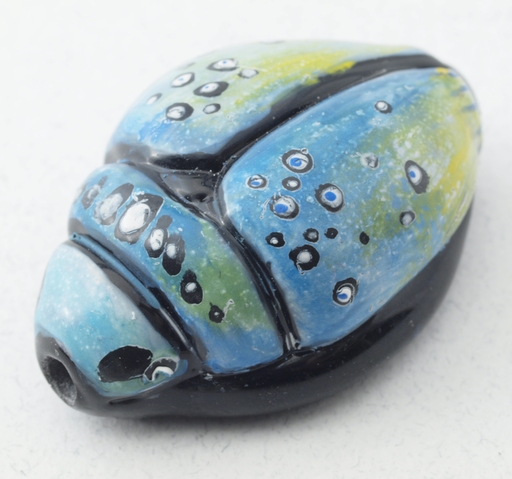Lampworkers often talk about ‘painting on glass’ when using trailing techniques—as I do when using complex stringers to decorate beads with scrollwork (what I call curliQs) and especially flowers, stems and leaves. Although there are some similarities, painting typically involves, well, paint (pigment, vehicle, binder) and some sort of application tool, traditionally a brush.
Trailing doesn't really qualify on either of those fronts, though the stringer does serve as its own miniature application tool; hence the term. —But one can actually paint on glass, using pure pigments and clove oil or the like as a vehicle. Since pigments do not have a coefficient of expansion, glass paints (up to a point) can be used on any glass.
The piece above was made during a Margaret Zinser class or perhaps shortly thereafter[1] At the time, Ms Zinser's working method was to shape the basic bead—say, a butterfly wing, or beetle, as shown here, then paint white china paint, then color china paint. This resulted in a thick layer of pigment, which was problematic, because the paint would sometimes pop off in the reheating process to bake the paint on—the bead has to be reheated to 1400 deg F. or so.[2] I reasoned that starting on white, (necessary because some of the colors are transparent) would be a more reasonable starting point.
That's as far as I've gotten. Four years later, the paints are sitting in a pretty cylindrical hatbox in my studio, basement still waiting for me to try that idea out.
post finished 25sep15;18nov23 —corrected typo, updated last para. As of now, I have a painted bead waiting for its first firing that's been sitting on a mandrel waiting for me to refire it since before Fran went to NYC to start her degree at Parsons...so mebbe a decade now?
Unless otherwise noted, text, image and objects depicted therein copyright 1996--present sylvus tarn.
Sylvus Tarn